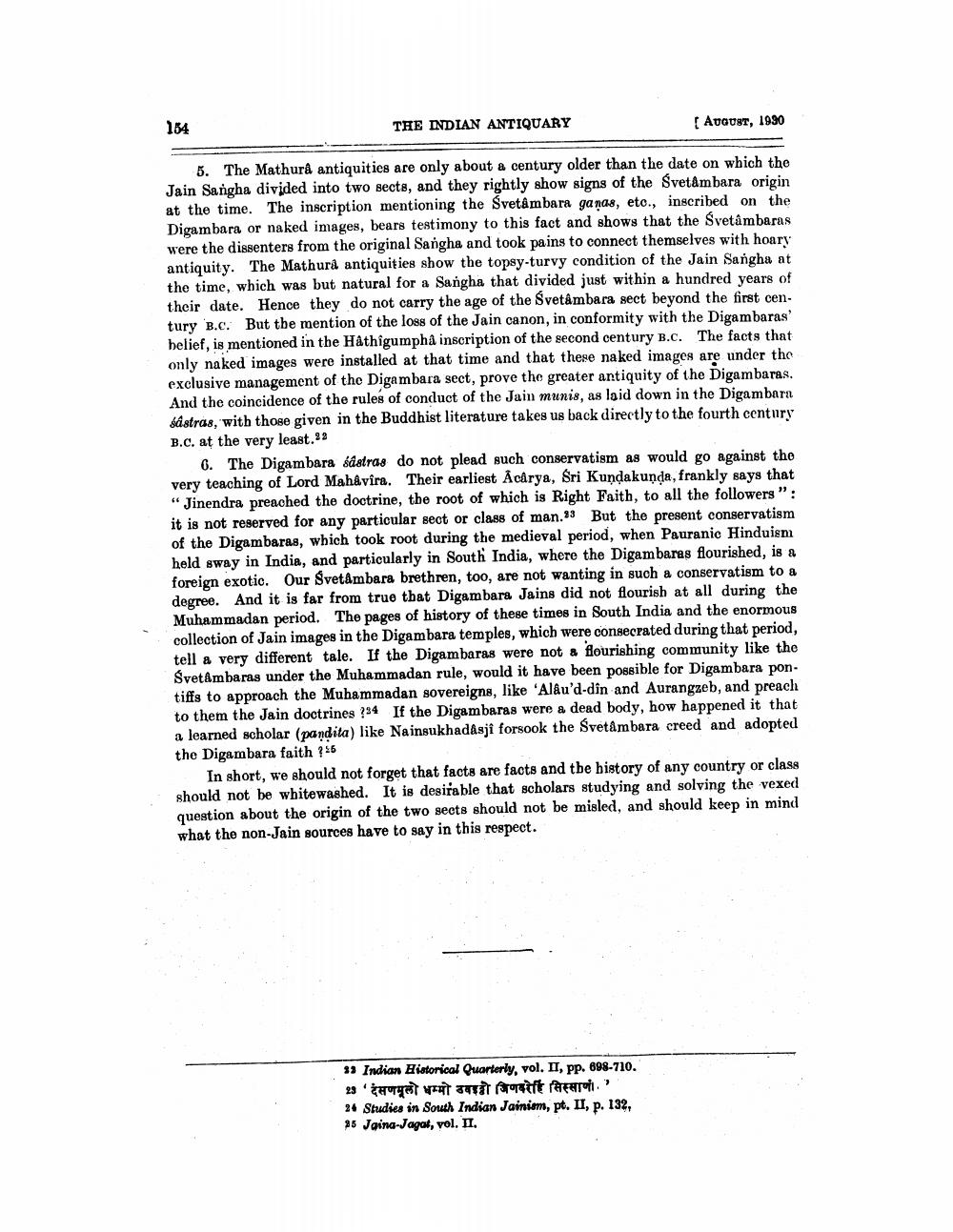________________
184
THE INDIAN ANTIQUARY
(Avaust, 1930
5. The Mathura antiquities are only about a century older than the date on which the Jain Sangha divided into two sects, and they rightly show signs of the Svetambara origin at the time. The inscription mentioning the Svetâmbara ganas, etc., inscribed on the Digambara or naked images, bears testimony to this fact and shows that the Svetâmbaras were the dissenters from the original Sangha and took pains to connect themselves with hoary antiquity. The Mathura antiquities show the topsy-turvy condition of the Jain Sangha at the time, which was but natural for a Sangha that divided just within a hundred years of their date. Hence they do not carry the age of the Svetâmbara sect beyond the first cen. tury B.C. But the mention of the loss of the Jain canon, in conformity with the Digambaras' belief, is mentioned in the Hathigumphå inscription of the second century B.C. The facts that only naked images were installed at that time and that these naked images are under the exclusive management of the Digambara sect, prove the greater antiquity of the Digambaras. And the coincidence of the rules of conduct of the Jain munis, as laid down in the Digambara sástras, with those given in the Buddhist literature takes us back directly to the fourth century B.C. at the very least.22
6. The Digambara sástras do not plead such conservatism as would go against the very teaching of Lord Mahavira. Their earliest Acarya, Sri Kundakunda, frankly says that "Jinendra preached the doctrine, the root of which is Right Faith, to all the followers": it is not reserved for any particular sect or class of man. But the present conservatism of the Digambaras, which took root during the medieval period, when Pauranic Hinduism held sway in India, and particularly in South India, where the Digambaras flourished, is a foreign exotic. Our Svetambara brethren, too, are not wanting in such a conservatism to a degree. And it is far from true that Digambara Jains did not flourish at all during the Muhammadan period. The pages of history of these times in South India and the enormous collection of Jain images in the Digambara temples, which were consecrated during that period, tell a very different tale. If the Digambaras were not a flourishing community like the SvetAmbaras under the Muhammadan rule, would it have been possible for Digambara pontiffs to approach the Muhammadan sovereigns, like 'Alau'd-din and Aurangzeb, and preach to them the Jain doctrines ?34 If the Digambaras were a dead body, how happened it that a learned scholar (pandita) like Nainsukhadåsji forsook the Svetambara creed and adopted the Digambara faith ?
In short, we should not forget that facts are facts and the history of any country or class should not be whitewashed. It is desirable that scholars studying and solving the vexed question about the origin of the two sects should not be misled, and should keep in mind what the non-Jain sources have to say in this respect.
33 Indian Historical Quarterly, vol. II, pp. 898-710. 23 'दसणमूलो धम्मो उबडौ जिणवरेहि सिस्साणी' 24 Studies in South Indian Jainism, pt. II, p. 132. 35 Jaina-Jagat, vol. II.




